Replacing blown fuses in Philips CD-i players with Mono III and Mono IV mainboards – sounds too simple to write an article about. That’s why I’m going to dig a bit deeper into the topic. An important fuse sits on the mainboard and protects the -5 V rail. I tripped (over) it by accident and was confronted with these weird symptoms that are hard to diagnose:
- No video output (well, there is something, but see below)
- Service Shell video output with a rolling/flickering image
- The disc tray opens on its own (tray loader motor is constantly spinning)
- The spindle motor is constantly spinning
- “cd” flashing on the VFD

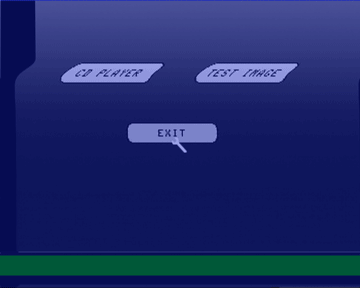
Apart from that, the CD-i player seemed to be working:
- Low-Level Test doesn’t show any error
- Remote control indicator lights up and movement is possible in the Service Shell (when you’re able to make out the image)
The accident
Some time ago, while doing measurements on the extension connector of the CDI470 that I use for experiments, I slipped with a probe and shorted the +5 and -5 V rails.
Immediately, the video signal was lost and didn’t come back after a power cycle. At first, I thought that my experiments with NVRAM upgrade and DFO were the root cause and that shorting the pins just gave the final blow to the mainboard. But it turned out to be something else.
After several power cycles and letting is rest for a while, I noticed that the motors were spinning. Now, spinning motors are usually a sign of problems with the power supply, especially the -5 V rail. When I checked the power supply, I was surprised that there weren’t any fuses at all, like the power supplies of the large players use to have. Also, all voltages were fine. I checked again at the extension connector (more carefully this time) and found that -5 V wasn’t there anymore.
The fuse
In the 470 service manual, the fuse 3255 MP100 is close to the connector for the power supply.
A quick look on the mainboard confirms that it is right next to the power supply connector (grid square F1). This applies to all Mono IV mainboards, by the way.
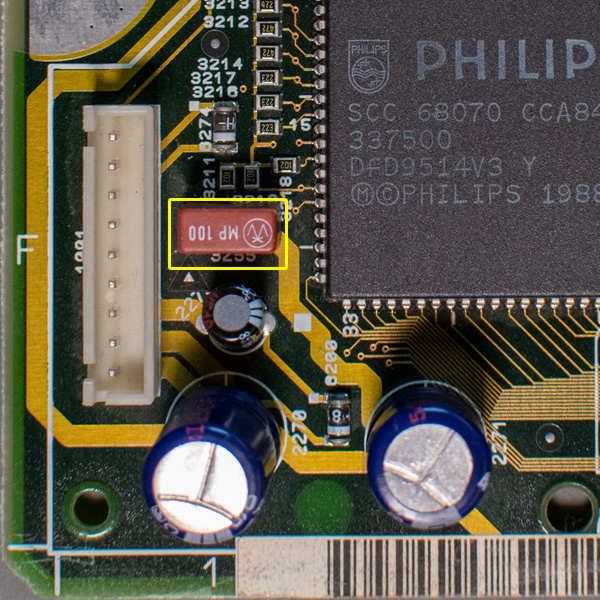
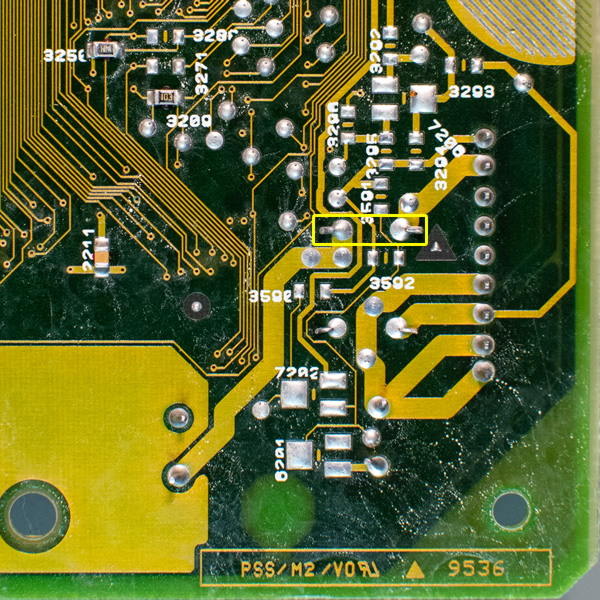
In the components list, there’s some more information:
Philips 12NC: 4822 252 51173 and 65V 1.0A. But MP100 already gave it away: It’s a Wickmann / Littelfuse 398 Series TE5 modul protector fuse.
I ordered a couple of replacement parts and replaced the broken fuse. Here are some pictures that I took of the old and new fuses:
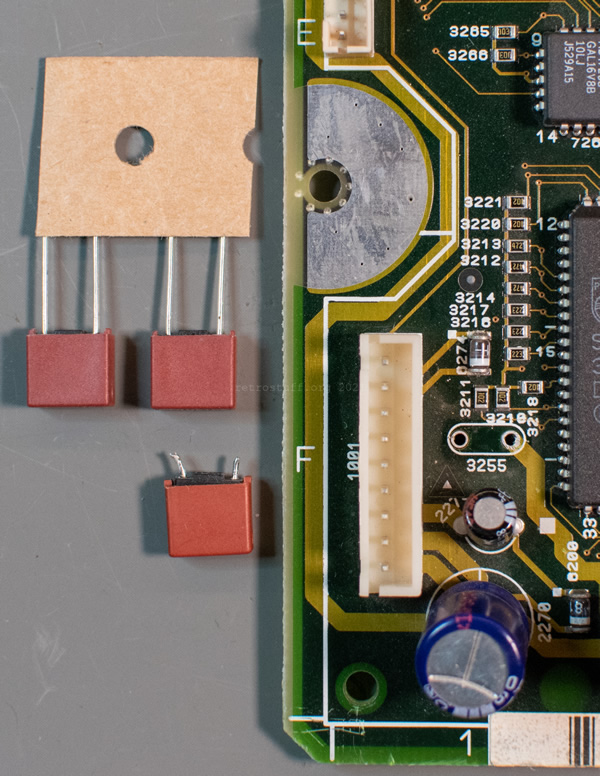
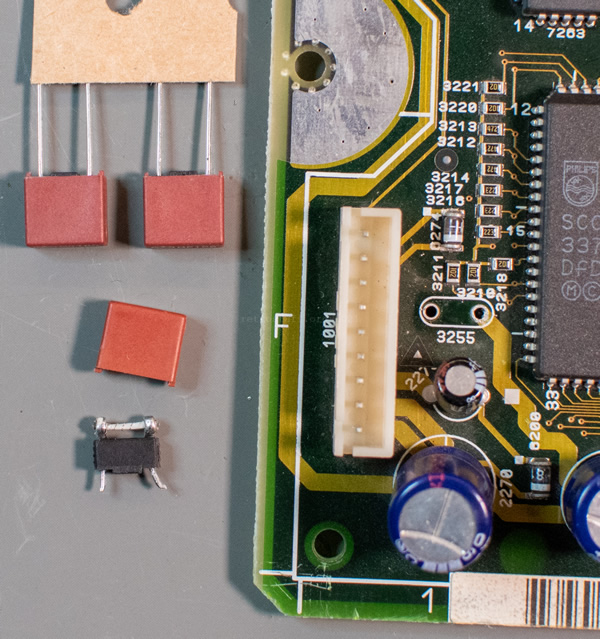
With the new fuse, everything went back to normal and my 470 works perfectly fine with all its modifications. The article could end here, but we’re not quite done yet.
Other mainboards
As this article is about Mono III / IV fuses, let’s also look at the other mainboards in this family, including the Mono III-based Roboco and FW380i mainboards.
On Mono III mainboards, the fuse for the -5 V rail has ID 3274 and sits farther away from the power connector in grid square F3.
Surprisingly, there are no fuses for the -5 V rail on the Roboco and FW380i mainboards. But there are other fuses.
More fuses
One example is the self-healing resettable fuse (polymeric PTC) 3277, which protects the +5 V rail of the controller/serial ports and the RF modulator port (+5VF). These fuses can be mistaken for ceramic capacitors, but you can easily recognise them because they have a shiny coating.
Type, location and Philips part numbers (12NC) according to the service manuals. As you can see here, there is an error. The fuse in the Mono III players is not an RXE065 (60 V / 650 mA) but an RXE040 (60 V / 400 mA). I have verified this with my Mono III players (210/40 and 220/60). Only the Mono IV players have an RXE065.
- Mono III:
RXE065, grid square F2, 4822 116 40264 0R81 60V PTC - FW380i: RXE040, grid square E4, 4822 116 40264 PTC DC RXE 60V 0Ω81
- Roboco: RXE040, grid square D6, 4822 116 40264 PTC 60V 0R80
- Mono IV: RXE065, grid square C1, 4822 116 40238 PTC 0R46
If you ever need to replace one of these fuses, look for PolySwitch fuses – they have gone through several manufacturers (Raychem / Tyco Electronics / TE Connectivity) and are now made by Littelfuse.
There are also some fusible resistors, but I won’t go into details now. These are easy to find in the service manuals and are labelled with a warning sign.
Power supplies
All information is now in the new article Philips CD-i Power Supply Units.
Conclusion and tips for testing
Whatever power issue or other unknown symptom your CD-i player shows, always check the supply voltages in several locations:
- On both power connectors (mainboard and power supply) to rule out problems with the power supply, fuses (if available) and the connection cable.
- On the mainboard in the locations indicated in the service manuals.
While the service manuals are usually very clear about where to check +5 V supply voltage of individual chips, they don’t tell you where to check -5 V. Check the schematics and you’ll find that the latter is used by servo op-amps and audio/video amplifier circuits. The easiest way to access it, however, is the extension connector. To avoid future accidents, I crimped a 3-pin JST-PH (2 mm) plug to an old PC fan cable. You can use an adapter like that to safely connect probes to the extension connector (pins A1 – B1 – C1).

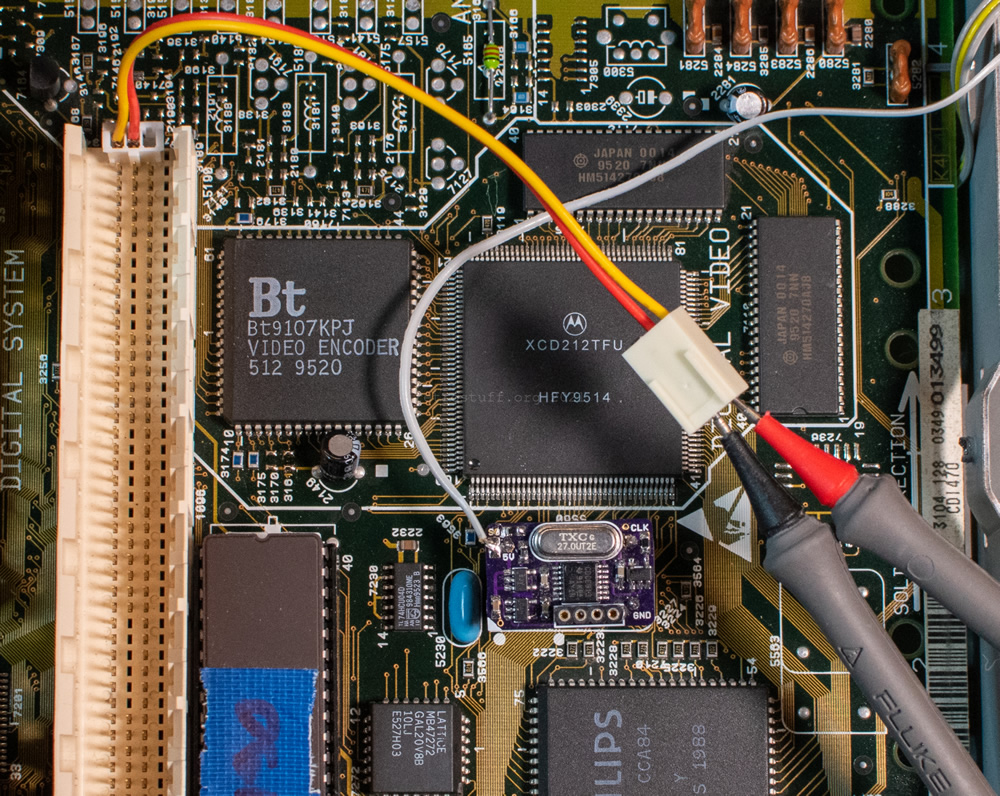
There are even more supply voltages for large players that the service manuals are even less clear about or constantly mix up:
+24/25 V and/or +12/11 V. Depending on the player, you’ll usually find them on the connector for the display panel (or combo panel if the player doesn’t have a VFD). +12 V is needed for players with SCART connector to generate the Switch signal.
Changelog
2021-11-29: Initial version published
2024-10-01: Added information about the resettable fuse. Moved Power supplies section to a new article. Minor additions and corrections.

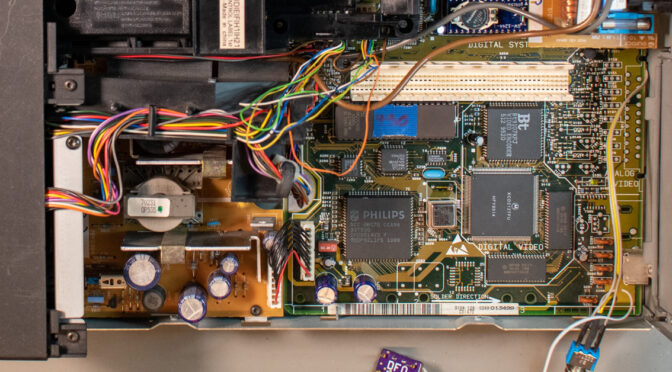
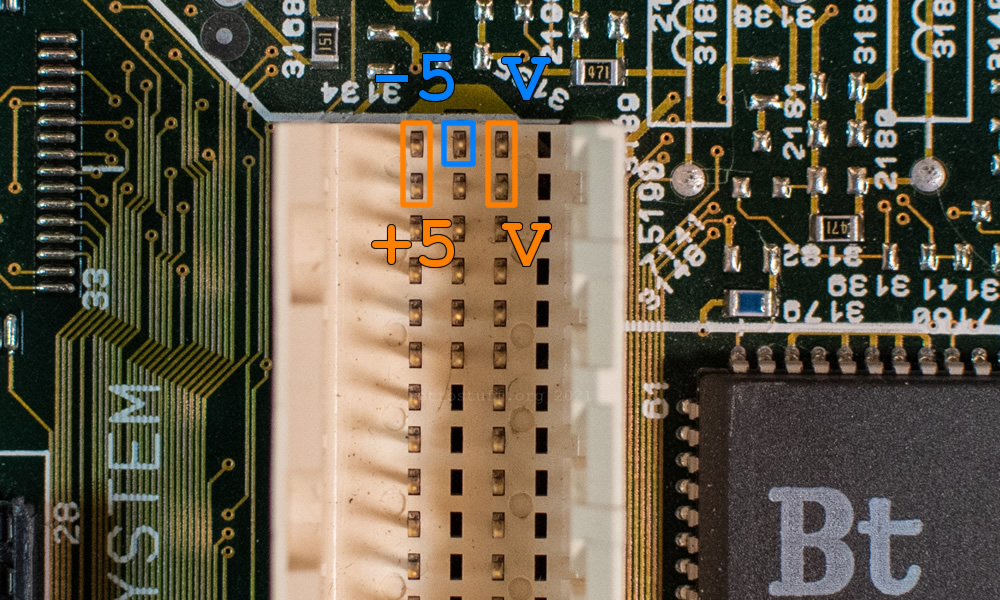
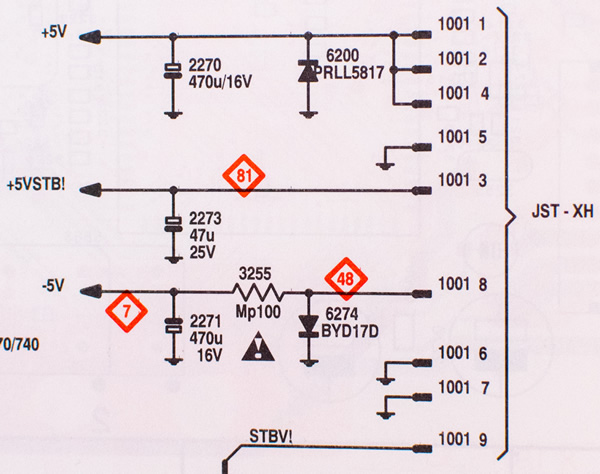
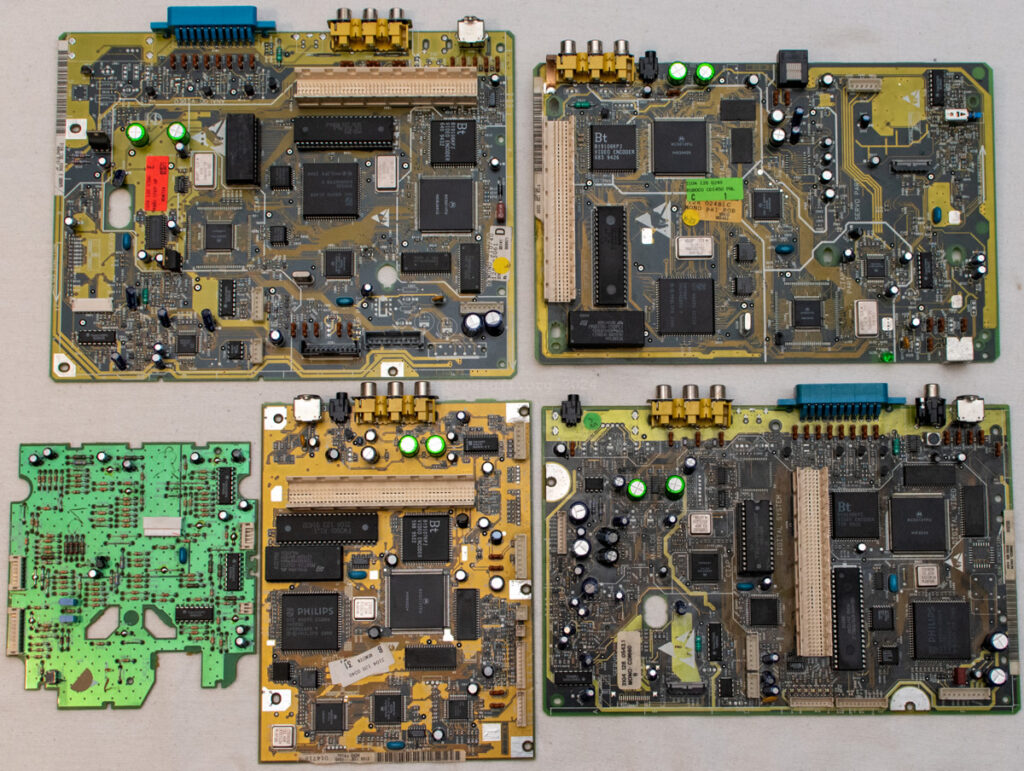
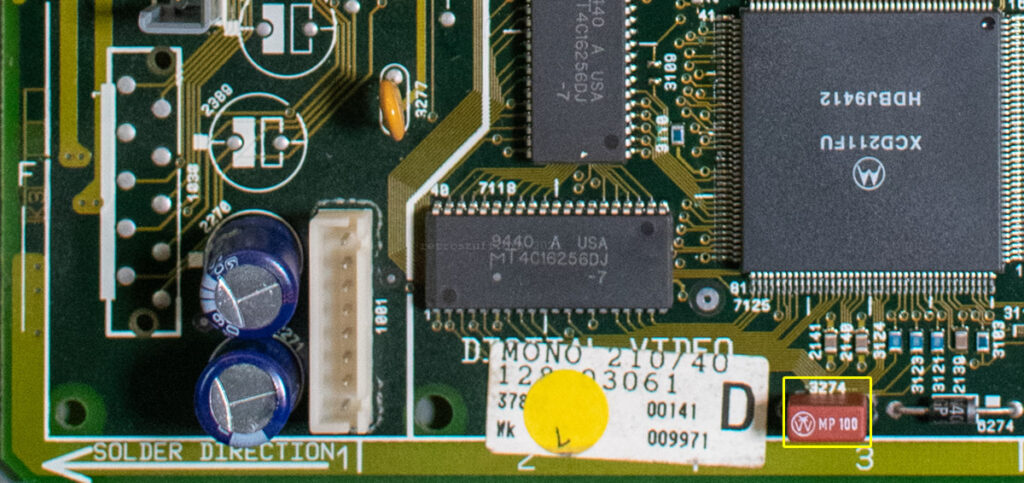
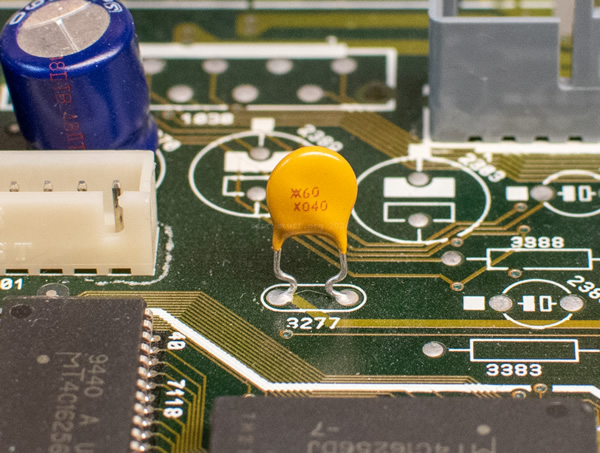
One thought on “Philips CD-i Mono III / IV Fuses”